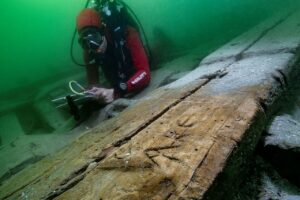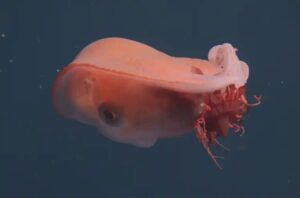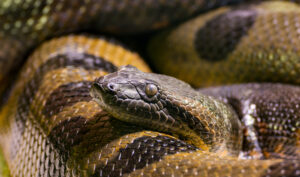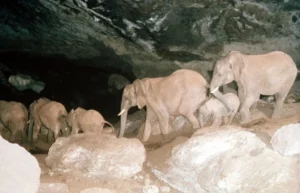Paleontologists have discovered a colossal extinct whale in Peru that seems to be the heaviest animal that ever lived. It even exceeds the weight of blue whales, long considered the largest animal ever.
Mario Urbina Schmitt first found parts of the giant whale, named Perucetus colossus, 13 years ago on Peru’s south coast. Excavations turned up a vertebra that weighed a staggering 150 kilograms. They then spent years digging more bones out of the side of a rocky slope.
They eventually found another 12 vertebrae, four ribs, and a hip bone. The species belongs to an ancient species of cetacean that swam in the oceans around 39 million years ago.
Although it was much heavier than the blue whale, it may not have been longer. Using the partial skeleton, researchers have estimated that the Perucetus colossus was 17-20m long, while a blue whale can grow up to 30m in length. The ancient whale had a body mass of between 85 and 340 tonnes. This is significantly heavier than a blue whale.
“Perucetus could have weighed almost two blue whales, three Argentinosaurs (a giant sauropod dinosaur), over 30 African bush elephants, and as many as 5,000 people,” Giovanni Bianucci, lead author of the study, told CNN.

Researchers hoist one of the massive vertebrae. Photo: Giovanni Bianucci
Dense bones
The reason that the ancient whales were heavier is the composition of their bones. Researchers used 3D scanners to analyze the bone surface and drilled into them to see inside. They are incredibly dense and compact bones. They have pachyosteosclerosis; the thickening and densification of bones. It is a condition not seen in any cetaceans, but it occurs in some sirenians, such as manatees and dugongs.
The dense bones likely limited the animals to shallow coastal waters and helped them dive. They would have been diving with air in their lungs. Deep divers have evolved to empty their lungs so they can dive deeper. The Perucetus colossus would have been more buoyant because of the air it remained, but the dense bones would have acted like diving weights.
Researchers think that the whales may have had an unusual body shape to compensate for the heavy bones. This would help keep them buoyant when they weren’t trying to dive. More similar to a manatee than a whale, it would have had a huge body with a very small head, legs, and arms.

Image: Bianucci, G. et al. Nature Journal
Diet a mystery
Researchers have no idea what the giant whale might have eaten. They did not find a head or teeth, so it is hard to decipher its diet.
Currently, there are three theories. First, it was a herbivore, although this would make it the only cetacean with such a diet. Second, it ate mollusks and crustaceans in sandy, shallow water. Third, it scavenged vertebrate carcasses.
Unless they find more of the skeleton, it will be impossible to tell which theory is correct. “I wouldn’t be surprised if this thing actually fed in a totally different way that we would never imagine,” paleontologist Hans Thewissen told The Hindu.
The Ica desert, where the remains were found, is a treasure trove of marine fossils. Once underwater, an abundance of animals has turned up there. Researchers have been working at the site since 2006.
“We have also found a Peregocetus pacificus, the most ancient quadrupedal cetacean to have reached the Pacific Ocean, Mystacodon selenesis, the earliest ancestor of the modern baleen whales, and the enormous macro-predatory sperm whale Livyatan melvillei,” said Bianucci.






